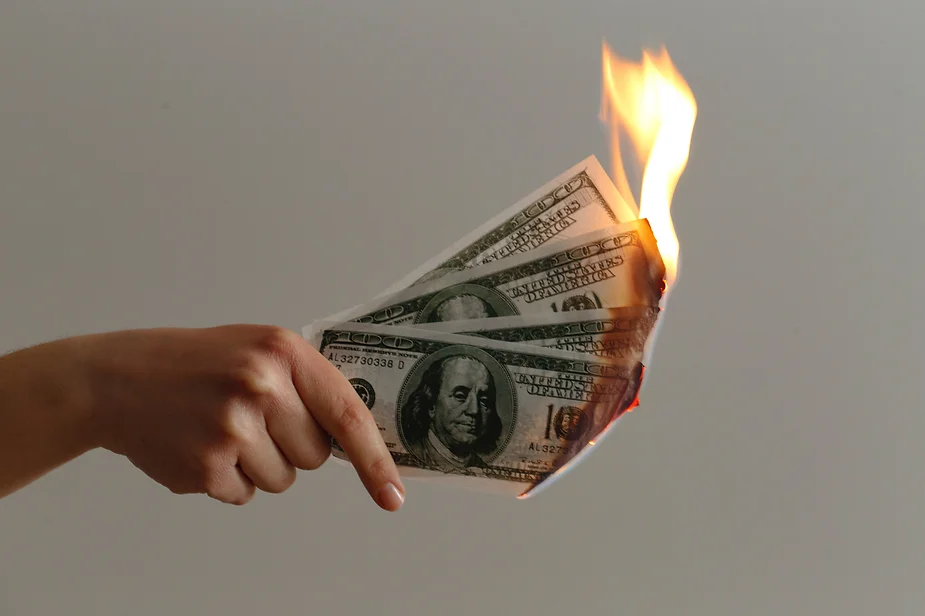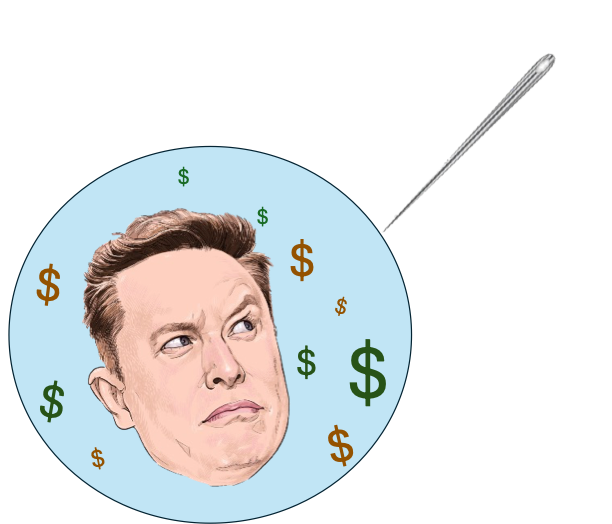Updated: Jan 22, 2021
Slap on a green sticker, and watch the crowds roll in, right? I’ve worked for a few different asset managers now. And I’ve always been surprised at the happy-go-lucky approach to green finance marketing and pitch books. There was no real consideration for the complex consumer behaviour or motivations behind sustainable purchases. The same old material, with a few pictures of trees dotted around. Meh.
But sustainable investors are a different breed, right? They’re not old, fusty, Wall Street wankers.
… Or so I thought.

1950s investor mentality
Back in the day, when global warming and being a corporate arsehole wasn’t such a concern, there was only one real kind of investor: the kind who wanted money. Shed-loads, truck-loads, mountain-loads of cash. At least, according to the 1950s Nobel prize winning Chicago School of Economics.
This “rational consumer”, was only interested in the bottom line. And perhaps the bottom of his secretary. And what painstakingly perfect pie his housewife had made for dinner. Ah… 1950s guys.
He bought investments not because they were exciting or fun, but because they would bring him a profit. Nothing else. End of story. Pie please.

Sustainable Investors today
Today, the consensus is that sustainable investors care about profit AND purpose. According to Banbury and al (2010) this directly challenges the Chicago School theory, showing it up to be a bit outdated.
But are people today really so different? Because I’m not convinced.
D’Souza et al identify four types of sustainable consumer, in order of increasing “greenness”;
- Conventional
- Emerging green
- Price sensitive green
- Environmentally green
For anyone interested in selling sustainable investments to these groups, they all have unique marketing needs. That’s because their motivations are different, – but not necessarily selfless. We still want to gain, but it’s not all financial.
We’re still drawn in by the price
Let’s start with the price-sensitive green group.
A recent report by Schroders found that 23% of us would ditch ethical investing, to earn higher profits. So perhaps we’re not as far away from our 1950s investment ancestors as we’d like to think. At the right price, our morals are for sale.

Back in 1999, Peattie found that there is this really intense price-perception matrix which goes on in our brains when we go to buy something ethical. You might think that you didn’t think twice when you picked up that Organic Fair Trade sugar (good for you, by the way).
But your subconscious knows better. It was like the Lord of the Rings Battle for Middle Earth up there. On the price side, you had the Orks and other gross things, clambering over the hill trying to convince you to save a few pennies. On the ethics side, Orlando Bloom was firing his little bow and Aragon was looking all dewy yielding a sword.
In a matter of seconds your brain had an epic battle, before you decided to spend all of £2.00 on sugar. So imagine how you’re feeling about pouring your life savings into sustainable investments. You are not the cool cucumber you thought you’d be. And a surprising amount of us would still position profit before the planet.
You can see proof of this everywhere. People have not divested from oil, they are still queuing up outside Primark, and last I checked, brands like CocoCola were still in business. As of June 2020, infamous bad-guy vice fund Vitium Global Fund had $117.17 million in assets under management. So not everyone wants to save the world at any price.

How to use it
- Striking that perfect price point, and drawing investors’ attention to the long-term financial benefits of sustainability is key.
- Over the past year, sustainable investments have proved that they cope well in a recession. Like anchors in a storm. Meanwhile, in the EU, we’re expecting carbon emitters to get hit with even more taxes, slashing their future profitability. Draw attention to this to spark up more interest with price-sensitive investors.

But that’s nothing compared to our social standing
If you thought that the last bit was intense, you just buckle in now. This is where your sustainable investment decisions really happen. I’m looking at the conventional and emerging green groups.
Think back to your childhood. The height of innocence. Even for investment managers.
Remember that dreaded afternoon when you called your teacher, “Mum”? Aragghh!! The shame!! … Or the day you started singing, but it wasn’t the right moment and the whole school assembly looked at you? Your face burns scarlet, and you just want to die.
We all remember a time when we went against the crowd. As a kid, it feels excruciating. As a teenager, we test it. As an adult, we tiptoe on the line, and try not to get it wrong. Because getting it wrong SUCKS. It’s how monkeys get kicked out of their pack. It’s how randoms end up alone, talking to themselves with too many cats. It’s where nobody wants to be.

In 2017, Vringer et al conducted a study which found that “sustainable consumption dilemmas” take the driving seat for our sustainable investment decisions. Or in other words, awkwardness holds us back.
They found that people are so incredibly reluctant to buck the trend, that they would actually rather have no choice at all. According to the study, the majority just want their government to make sustainable decisions for them. Ouch. So this might explain why it’s all been a bit slow. A few years earlier in 2013, Marcus et al noticed a similar trend. We just hate being different. If Greta Thunberg didn’t have Asperger’s Syndrome, she probably wouldn’t have shouted, “How dare you!” to all those world leaders. Her indifference to social standing is her super power.

How to use it
- Appealing to these socially-sensitive groups of people needs a bit of coaxing. Use statistics to show that all the good people today are sustainable investors.
- Emphasise how cringe it is to be an unsustainable investor today. Effective marketing for these guys could touch on a bit of social FOMO (fear of missing out).
Sustainability has become part of our identity
While we may not be so different from our mid-century granddads, we do share their same desire for self-preservation. Much like they wanted to rebuild their homes after the world wars, we want to rebuild our planet after all this bad stuff.
More importantly, the concept of sustainability is becoming an intrinsic part of our identity. Back in 2012, the legends that are Smith and Browner found that this is at the crux of our purchasing decisions. So it might just be a part of our investment choices too.
[…] consumers’ purchasing choices are attempts to create and reinforce their self-identity. – Smith and Browner, 2012

How to use it
- A 2019 study by Brieger found that the more integrated we are in our local and national community, the more we feel sustainability as part of our identity. When we feel part of a collective, we’re more willing to go the extra mile to protect the group.
- Marketers looking to bolster up this feeling could consider creating more of a community. Local events, school stuff, community hall talks – whatevs. Anything that fosters that feeling.
How to market sustainable investments
Embracing the popularity, social importance and personal significance of sustainability is important for investors. As well as addressing the more tried-and-tested approach of performance and prices.
I don’t think we were ever so simple as the robotic “rational consumer”. But our motivations have not changed much. They’ve been more or less the same since caveman times. We want to be accepted and to do the right thing for the group, without giving too much away or feeling stupid. And when we’re not sure of the way forward, we dither and look for leadership from experts.
Banks and Investment Managers need to be those leaders now.
Create marketing material which speaks to investors’ souls (not just their wallets), and the rest will follow… At least, a lot more than banging on a green sticker and calling it a day.




